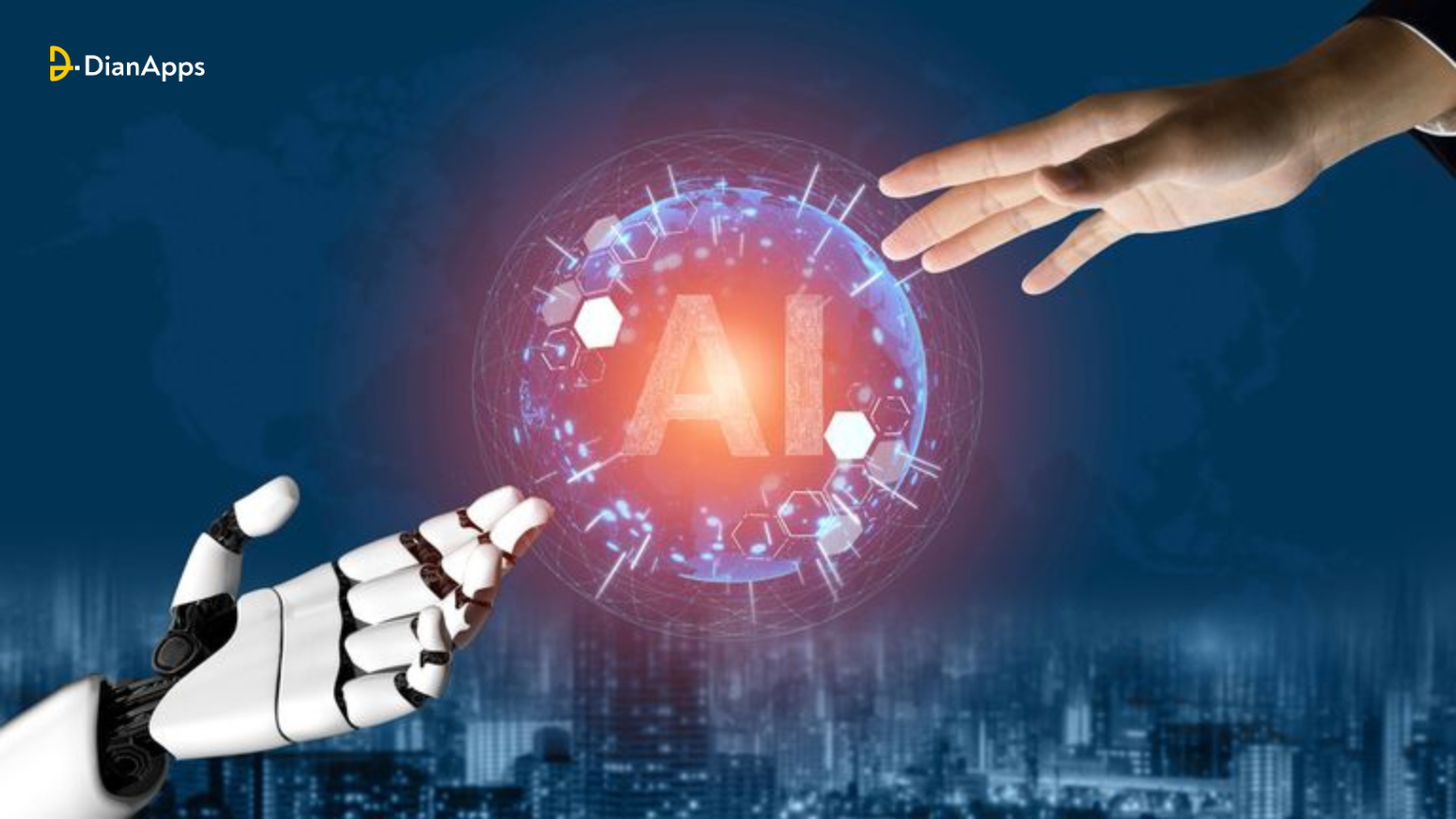Top 7 Conversational AI Trends for 2024
The conversational AI trend is one of the most noticeable and versatile solutions available for businesses today. For many users, it feels like having a chat with a virtual assistant, capable of understanding, processing, and responding to human language naturally and intuitively. Its popularity stems from its ability to automate customer interactions, offering each user a smooth and personalized experience.
However, the potential of this technology extends beyond customer service alone. Let’s explore the concept of conversational AI and the trends it is going to set in 2024. With that, we can analyze how AI will make an impact and how they are meant to shape the tech industry.
What is Conversational AI?
Conversational AI is technology that tries to talk and understand language like humans do, without using a set script like traditional chatbots. It uses fancy technologies like Machine Learning, Natural Language Processing, and Natural Language Understanding to understand what people say and respond to them. It also uses things like speech recognition and sentiment analysis to help figure out the right things to say.
A chatbot on your website can assist to some extent unless your web visitors don’t receive accurate information, which turns into a frustrating experience.
Having conversational AI tools and staying updated with the latest updates in the field is the need of the hour for your business. To be specific, these can include Natural Language Processing and Machine Learning abilities , as well as uncensored ChatGPT, which help in understanding customer needs better and providing them enhanced experience.
Also read: How Can AI Tools Contribute to Business Growth?
The List of Conversational AI Trends that Will Shape 2024
1. Computer vision technologies

Computer vision is an amazing part of AI that lets computers understand and act on what they see in pictures and videos. Nowadays, computer vision systems are even better than people at recognizing things and reacting fast.
For example, in factories, computer vision helps identify defects in products 90% quicker, making manufacturing much smoother. It’s not just for factories, though – computer vision can be used for all sorts of tasks, like keeping an eye on farms or even spotting fake money.
Thanks to new technology, like deep learning, computer vision can do even more advanced things than before. Lots of businesses are excited about it, especially for things like tracking and identifying objects.
In manufacturing, where there aren’t enough people to do all the jobs, computer vision is a lifesaver. It helps factories run more smoothly and even means they don’t need as many workers. Plus, it’s great at spotting any mistakes or problems during production, so things can be fixed fast.
Overall, computer vision is like having super-smart eyes that can help with lots of different tasks, making life easier and more efficient for everyone involved.
2. Better Natural Language Understanding
Advancements in Natural Language Understanding (NLU) are making machines smarter at understanding human language in 2024. This technology teaches computers to grasp the meaning behind what people say, which makes conversations with AI more natural and effective.
NLU is getting better at understanding the context of conversations, making interactions more sophisticated. It uses fancy techniques like machine learning and deep learning to translate languages and answer questions. NLU can even understand the feelings behind words in different languages like English, French, and Mandarin.
Businesses are really into NLU because it helps them interact better with customers. It can analyze what customers say, handle customer service automatically, and make each user’s experience more personal. NLU is also great at processing lots of data, finding patterns, and helping companies make smart decisions based on that data. The future looks bright for NLU, especially in making communication between businesses and customers smoother and more helpful.
3. Personalization Through Artificial Intelligence
Simply put, personalization is a big trend in technology, especially in conversational AI for 2024. AI can analyze lots of customer data, find patterns, and behaviors, and help businesses create personalized experiences for each customer. This means giving tailored offers that match what each customer likes, which makes them more engaged, loyal, and likely to buy more.
With the help of AI-powered data science, businesses can be more creative and reach more people with their strategies. They can also use AI to figure out the best prices and promotions to offer customers.
Plus, with AI-as-a-Service, it’s easier for businesses to use AI without having to build everything themselves. AI-based auto-personalization sorts customers into groups based on their data, so businesses can show the right content to the right people. This helps them target more audiences effectively and efficiently.
4. Quantum Computing and AI
Quantum computing is a new type of technology that uses the weird and wonderful rules of quantum physics to solve really tough problems. Unlike regular computers that use tiny switches called transistors, quantum computers use things like entanglement and superposition to do their calculations. This allows them to tackle problems that would take even the fastest regular computers millions of years to solve.
Suppose you want to find a specific book in a huge library. What happens in traditional computing is you have to search each bookshelf. This linear approach might be time-consuming and inefficient. On the other hand, when you use a quantum computer, it can explore all the books simultaneously with the concept of superposition. It can check all paths at once and quickly identify the location of the desired book.
Scientists are excited about the idea of using quantum computers for artificial intelligence because they’re good at certain types of tasks. For example, they’re great at solving problems involving lots of options, finding the best solutions, and doing complex math. Since a lot of artificial intelligence relies on this kind of math, quantum computers will likely help speed up some AI tasks in the future.
5. Bigger and Better Generative AI Models
The trend of generative models getting larger is expected to continue, with research groups training models with billions of internal parameters. While this might seem insignificant to some, larger language models tend to exhibit better performance, unlike traditional programming where more code doesn’t necessarily mean better outcomes. This development has complex implications, as massive models can achieve remarkable feats such as translation, question answering, and coding.
While there may eventually be scalability limits, for now, this approach is proving effective and is expected to impact various domains, from information retrieval to customer service. As these models grow, retrieval-augmented generation (RAG) evaluation further enhances accuracy by integrating external knowledge, improving tasks like translation and question answering
Learn about: Open AI introduces Sora: A Next-Gen Text-to-Video AI Model
6. Multilingual Capabilities of AI
Advancements in multilingual AI, like chatbots, help businesses break language barriers and connect with customers worldwide. With the aid of large language models, AI is transforming how we use data, potentially leading to a $51.8 billion AI market value by 2028. These models enable businesses to engage with a broader audience and expand their global presence.
By leveraging AI-powered translations and multilingual geolocation, businesses can customize content based on location and language preferences, enhancing marketing strategies and personalizing user experiences. However, the key concern is to strike a balance between linguistic authenticity and efficiency.
7. Enhanced Security and Authentication
Ideally, the security industry can not be ignored by the global conversational AI trends, which is why tech plays a crucial role in boosting security and authentication within businesses. AI assists in identifying patterns and deviations while taking care of defense against cyber threats.
AI’s machine learning algorithms can evaluate truckloads of data in real-time. With such secret weapons, any business can track and respond to possible security threats in no time and with better accuracy
Not only that, but AI is now making authentication processes easier for individuals and corporate users. This ultimately cuts down the risk of identity theft and fraud. Launch of advanced biometric systems like facial recognition and fingerprint scanning are now commonly seen in places, thanks to AI. These systems recognize unique human features, providing a safe and user-friendly way of authentication.
AI is Here to Stay
That sums up our list of the top conversational AI trends to watch out for in 2024 and ahead.
Artificial intelligence, and the tech wonders it can do, will surely transform the way businesses and corporate individuals operate in the world.
In multiple industries, AI has been already driving the development of methods and workflows that we might not have imagined yet. With great power comes even bigger responsibilities. It can increase efficiency, minimize the impact of labor insufficiency, and motivate businesses to generate new revenue streams.
However, the actual risks of AI remain to be seen. In the coming time, the flaws of Artificial Intelligence may be exposed. So, governments, agencies, and consumers will have to take action on how to balance the benefits and risks.
Alternatively, businesses can get in contact with a professional custom software development company to leverage the benefits of AI trends.




